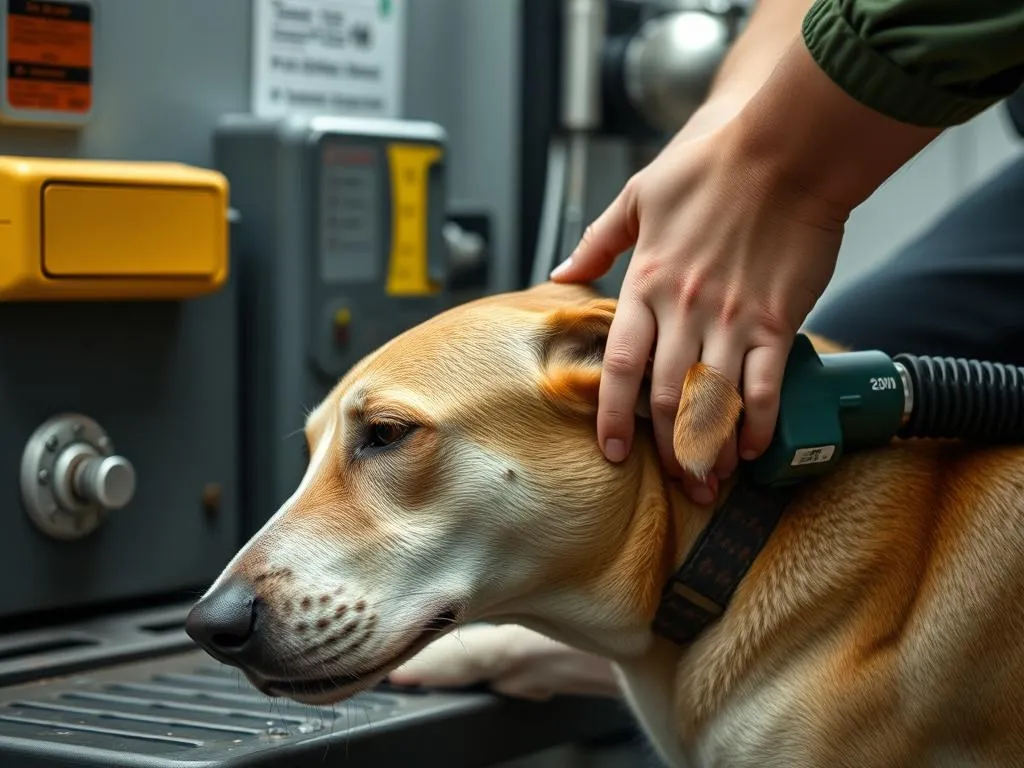
Gas buildup in dogs is a common issue that can lead to discomfort and distress. As pet owners, it’s essential to understand how to help alleviate this problem to ensure our furry friends remain happy and healthy. Knowing how to massage gas out of a dog can be a simple yet effective way to provide relief.
Understanding Gas in Dogs
What Causes Gas Buildup in Dogs?
Gas in dogs can be attributed to several factors, both dietary and environmental. Here are some common causes:
-
Dietary Factors: Certain foods are notorious for causing gas in dogs. Ingredients such as beans, dairy, and high-fiber foods can lead to excessive flatulence. Additionally, if a dog eats too quickly, it may swallow air along with its food, contributing to gas buildup.
-
Medical Conditions: Various gastrointestinal disorders, such as irritable bowel syndrome or food allergies, can result in increased gas production. If your dog is frequently experiencing gas, it may be a sign of an underlying health issue.
-
Environmental Factors: Stressful situations or changes in routine can also affect a dog’s digestive health. Lack of exercise can slow down the digestive process, leading to gas accumulation.
Signs and Symptoms of Gas in Dogs
Recognizing the signs of gas buildup is crucial for timely intervention. Common symptoms include:
-
Bloating and Abdominal Distension: A visibly swollen abdomen can indicate gas buildup.
-
Excessive Flatulence: If your dog is passing gas more than usual, it could be a sign of digestive discomfort.
-
Discomfort or Pain: Dogs may show signs of distress, such as whining, pacing, or a reluctance to lie down.
-
Changes in Appetite or Behavior: If your dog is suddenly less interested in food or seems more irritable, it may be experiencing gas-related discomfort.
The Importance of Addressing Gas in Dogs
Health Implications
Addressing gas in dogs is not just about comfort; it can have significant health implications. Persistent gas may indicate more serious gastrointestinal issues, such as pancreatitis or intestinal obstruction. Additionally, if gas buildup leads to vomiting, there’s a risk of choking or aspiration, which can be life-threatening.
Improving Quality of Life
When gas discomfort is alleviated, dogs often experience an enhanced quality of life. This can reduce anxiety and improve their overall mood. Regular veterinary check-ups are essential for pets experiencing persistent gas, as they can help identify any underlying health issues.
How to Massage Gas Out of a Dog
Preparing for the Massage
Before you attempt to massage gas out of your dog, it’s important to create a calm environment. Choose a quiet area where your dog feels safe and relaxed. Make sure to wait at least an hour after your dog has eaten before starting the massage to avoid discomfort. Assess your dog’s comfort level with touch; some dogs may be sensitive or resistant to being handled.
Techniques for Massaging Gas Out
Basic Massage Techniques
When massaging a dog, gentle strokes and pressure application are key. Focus on the abdominal region and the sides, as these areas are most likely to harbor trapped gas.
Step-by-Step Guide
-
Positioning Your Dog Comfortably: Have your dog lie down on a soft surface, ensuring they are relaxed. You can sit beside them or gently place them on their side.
-
Starting with Gentle Strokes: Begin by gently stroking your dog’s abdomen with the palms of your hands. Use slow, rhythmic movements to help them relax.
-
Gradually Increasing Pressure as Tolerated: As your dog becomes more comfortable, you can increase the pressure slightly. Pay attention to their reaction; if they seem uncomfortable, ease off.
-
Specific Moves to Encourage Gas Release: Use circular motions on the abdomen to help stimulate digestion and encourage gas to move. You can also try moving your hands in a “kneading” motion, mimicking how dough is kneaded, which can help release trapped gas.
Alternative Methods to Aid Gas Relief
While massage can be effective, other methods can complement your efforts in relieving gas discomfort:
-
Dietary Changes: Introduce probiotics or high-fiber foods to your dog’s diet gradually. These can help foster a healthy gut microbiome and aid digestion.
-
Physical Activity Suggestions: Regular exercise can stimulate the digestive system. Short walks after meals can promote healthy digestion and reduce gas buildup.
-
Importance of Hydration: Ensure your dog has access to fresh water at all times. Proper hydration helps maintain healthy digestion.
When to Consult a Veterinarian
Recognizing Serious Symptoms
It’s crucial to recognize when gas may be a sign of a more serious condition. Consult a veterinarian if you notice:
- Severe abdominal distension
- Persistent vomiting or diarrhea
- Signs of extreme pain (e.g., whining, restlessness)
- Loss of appetite lasting more than a day
These symptoms could indicate serious gastrointestinal issues that require immediate attention.
What to Expect at the Vet
When you visit the vet, they may perform several diagnostic procedures to determine the cause of your dog’s gas. Common procedures include:
-
Physical Examination: The vet will assess your dog’s abdomen for signs of bloating or pain.
-
Diagnostic Imaging: X-rays or ultrasounds may be used to visualize the gastrointestinal tract and identify blockages or other abnormalities.
-
Blood Tests: These can help identify underlying health issues, such as infections or metabolic disorders.
Potential treatment options may include dietary adjustments, medications to alleviate symptoms, or more significant interventions depending on the diagnosis.
Conclusion
Gas buildup in dogs can be uncomfortable and distressing, but understanding how to massage gas out of a dog can provide effective relief. By recognizing the causes and symptoms of gas, implementing massage techniques, and considering dietary and lifestyle changes, you can help improve your dog’s comfort and overall well-being. Always remain vigilant for signs of serious health issues and consult with your veterinarian when necessary. Proactive pet care is key to ensuring your furry friends lead happy, healthy lives.









